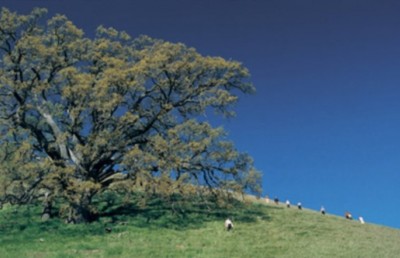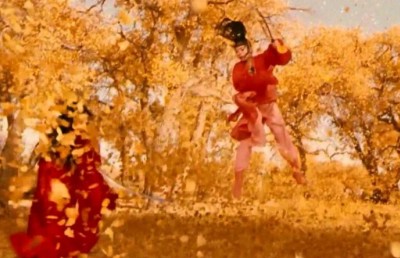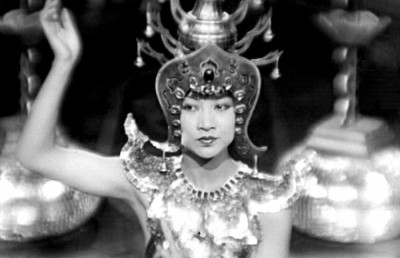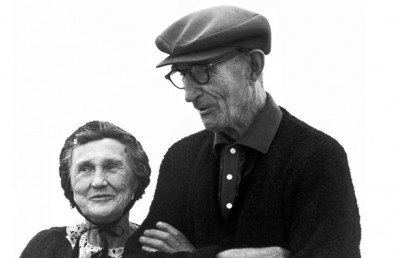Testing for Nature’s Equilibrium and the Experimental Process
Sergei Eisenstein and Frank Lloyd Wright on Organic Unity and the Experimental Process
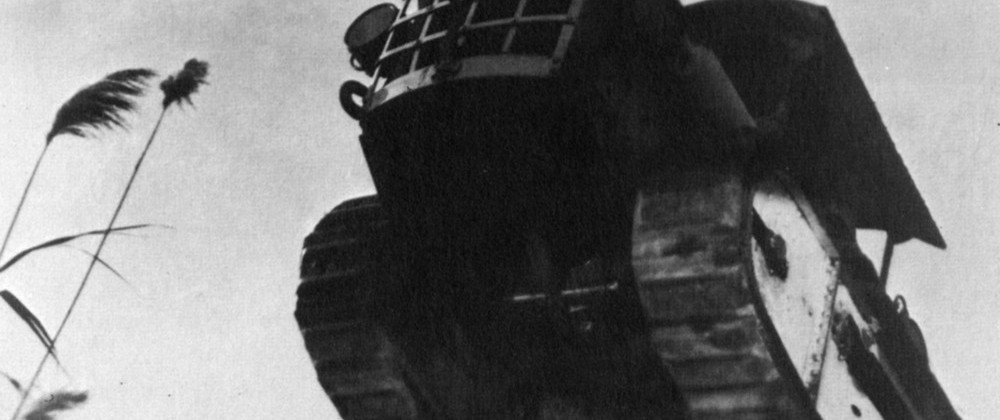
Eisenstein, in New York on his way to Hollywood, came across Frank Lloyd Wright’s design for a glass tower in the New York Times magazine, dated the 29th June 1930 (Brock). He cut out the picture of Wright’s design to place it in his scrapbook, as it had revitalised his interest in a film project he called The Glass House (Leyda, Voynow, 36-44). This was an idea for a sound film which he was to propose to his new employers at Paramount. For Eisenstein the new glass technology brought up interesting dilemmas about public and private life, and he was also excited by the new cinematic spaces which such architecture could produce – it would become possible to see “above, below, sideways, slanting, in any direction” (Montagu 102). All camera angles could be used. [1] The ideas about organic unity and form which Wright mentions in his interview for this New York Times magazine article bear striking similarities to Eisenstein’s ideas about organic unity and form in the sound film. Neither Wright’s glass skyscraper nor Eisenstein’s The Glass House were realised. However, both figures were influenced by similar international currents of thought; though they never met, they certainly met in ideas.
For Wright the technology of the cantilever provided the opening to a vista of a new and organic architecture. In his autobiography he explains how before the invention of steel, buildings were constructed on the principle of post-and-beam architecture. He described this ancient technology as being based on a principle of superimposition: the horizontal element in a structure (a beam) was simply superimposed on a vertical element (a post). The introduction of the arch by the Romans further developed the post-and-beam concept, but architects had to wait until the arrival of steel before they could design and make structures where it was impossible to know where a post ended and a beam began. As a result of the continuity provided by steel, ceilings and walls would become continuous elements of the same structure: “both support and supported may now by means of inserted and welded steel strands or especially woven filaments of steel and modern concrete casting be plaited and united as one physical body.” Like a branch which glides into the fabric of a tree’s trunk ‘steel in tension enables the support to slide into the supported’ (Wright, 1943, 341).
Wright described his design for the St Mark’s Tower (the drawing of which Eisenstein cut out for his scrapbook) as being an example of a structure entirely based on the cantilever principle, with “the abstract pattern of the structure as a complete structural-integrity of Form and Idea (which) may be seen fused as in any tree but with nothing imitating a tree” (Wright, 1943, 342-343). The concept of fusing form and idea corresponds to Eisenstein’s “general idea,” the apprehension of an idea which is present in every part of a given structure and which is necessary in order to create organic unity in a work. Eisenstein believed that audiovisual film could only work effectively if there was a “general idea” common to both the sound and the visual elements, as in Kabuki theatre, where he believed that this principle worked “to perfection” (Eisenstein, 1977, 24). The “general idea” principle or “common denominator” is directly related to the situation of counterpoint (as mentioned in the “Statement on Sound”) where two or more elements function on an overall basis of equality, they “do not accompany (nor even parallel) each other, but function as elements of equal significance.” [2]
This lack of accompaniment was demonstrated by Wright, using his hands (Wright, 1974, 168). He demonstrates the post-and-beam construction, where a beam is superimposed on a post, by placing one hand flat (the beam) on to his other hand bunched into a fist (the post). By contrast, he demonstrates the tensile strength of organic architecture by interweaving his fingers, which are in a position of total equality or interchangeability, a characteristic of what he called ‘organic harmony, to the each in all and the all in each throughout’ (Wright, 1995, 53).
The interchangeable nature of the lines in weaving (like the equality of the melodic lines in counterpoint) was for Wright fundamental in architecture. He stated that “architecture…before all…is no less a weaving and a fabric than the trees are” (Wright, 1943, 168). Out of the plasticity of concrete, its susceptibility to moulding, he imagined “a kind of weaving coming out of it. Why not weave a kind of building?” (Wright, 1943, 235). In 1927 he designed San Marcos-in-the-Desert, a large resort complex to be built in Arizona, in which “the entire building is in pattern an abstraction of mountain region and cactus life…the whole building is made more cactus than any cactus can be in itself” (Wright, 1943, 314). The structure which supports the local saguaro cactus is a woven form.
Eisenstein used the concept of musical counterpoint to structure audiovisual montage. In 1946 he affirmed that what he called “audiovisual counterpoint” was “the sine qua non of audiovisual cinema” (Eisenstein, 1995, 657, 869n). In his text Non-Indifferent Nature he related the technique of counterpoint to the aim of achieving organic unity in a work: “The very terms: ‘counterpoint,’ ‘polyphonic writing,’ ‘fugue’ – have slipped through and interwoven during the entire course of our analysis, and this is because the actual development of the montage form vibrates according to the degree of tangibility in it of such features, devices, and methods” (Eisenstein, 1976, 265). He then asks the reader what the attraction is of “these methods, methods related to the repetition of motifs, to the pursuit of it through other motifs, to the interweaving and unweaving of different voices, working as a branching out of a single whole?” (Eisenstein, 1976, 265) For Eisenstein the answer to his question lies in the fact that counterpoint features two ancient and fundamental human activities, that of hunting and weaving. This is what explains their power:
The attraction of counterpoint constructions is undoubtedly based on the fact they seem to resurrect those instincts deeply set in us and, acting on them, they therefore achieve such a profound power. One of them defines and nourishes the attraction of the weaving of separate motifs into one whole, the other –the hunt for lines of separate motifs through the thicket of voices interweaving into one (Eisenstein, 1976, 265).
The weaving of multiple elements into a single organic unity, was what Wright termed “the each in all and the all in each throughout” or more specifically, as Pfeiffer described this principle: “all parts related to the whole as the whole is related to the parts” (Pfeiffer, 1997, 8). This approach was also described by Eisenstein, with regard to the organic unity of a work: “one and the same principle will nourish every part, appearing in each of them with their own special qualitative distinctions. And only in this case can one speak of the organic unity of a work…” (Eisenstein, 1976, 10). However Eisenstein points out that there is a higher order of organic unity, one where the unity in the work is based on natural structures. This type of organic unity,
occurs when not only the actual principle of organic unity is present but also the actual canon of law by which natural phenomena are structured. This could be called the organic unity of a particular of exceptional order. It is this that we find particularly interesting’ (Eisenstein, 1976, 11).
Eisenstein gives a specific example of this level of organic unity in his essay on his audiovisual collaborations with Prokofiev. He mentions how flat and two-dimensional are images which have but one element of connection with the music which is combined with them. What he calls a convincing “ ‘relief’ musical image,” a multi-dimensional audiovisual experience, arises from when a melody is built on the same principle as what is being shown in the images. As an instance of this phenomenon, he mentions natural phenomena like images of a fire, a storm, a thick forest, a mountain landscape, and the ocean. The “representative aspects” of these images are assigned organically to the development and the instrumentation of the music: “the harmonic or contrapuntal combination of these aspects produces an all-embracing general image of the whole” (Eisenstein, Danko, 1970, 161). This technique is analogous to the way that Wright assigns significant aspects of the surrounding landscape to various parts of the structure of his buildings and constructions.
This higher order of organic unity is present in Wright’s most effective designs, for example his Johnson Wax building. Wright believed that it was vitally important to “read the book of nature. What we must know in organic architecture is not found in books. It is necessary to have recourse to nature with a capital N in order to get an education.” By learning not just the surface structures, but the underlying structural principles of various natural forms, it is possible to learn from these forms the “truths of form following function.” Being aware of surface structures just leads to imitation, “but if we dig deep enough to read the principles upon which these (natural objects) are activated, we arrive at secrets of form related to purpose that would make of the tree a building and of the building a tree” (Wright, 1995, 260). In the latter phrase there is once again the principle of interchangeability characteristic of organic forms.
In his design for the Johnson Wax Building Wright used what he called “slender, hollow, monolithic dendriform shafts” (Wright, 1995, 165). In a drawing of a section of one of these columnar structures he identifies the different parts of the column as a “stem,” “calyx” and “petal,” which would indicate that the structural source of these columns was a flower. [3] Local building code representatives were unconvinced of the strength of these slender columns, so they were publicly tested to destruction on site, before building could begin (Blake, 1963, 100). In addition, the organic unity of this building is evident from photographs of the interior. The parallel lines of the glass tubing used for the roof and the walls are echoed in the articulation of the lines of mortar in the brick walls. The circular glass tubing is echoed in the circular columns and in the “lilypad” shapes at the tops of these columns: all the forms in this space are interacting on an equal level, creating a sense of organic unity and equilibrium (Wright, 1995, 105).
Wright’s quest for this state of equilibrium was always a dynamic one. The testing process was part of this quest, in particular “making tests according to…inspiration.” Yet he realised that the expert in building construction, the one who is familiar with existing building codes would have problems with this approach: “testing an inspiration? An expert in building construction would declare it an absurdity.” He understood that the building codes bureaucrat was on “the side of dead data, the idée fixe, the rules of the Code.” For this person “a test is usually heresy.” However he saw the experimental process as a vital part of his practice as an architect, and also something which was an organic part of his life: “an architect comes closer to certain secrets of nature in his practice if he is master of organic FORM.” The practice of testing helps to achieve this aim: “Nearly every structure I have built, large or small, required some test. Or many…One experiment would lead to the next until the building process extending back over a period of forty-five years resembles the continuous test to which life itself subjects the architect himself” (Wright, 1943, 478-479). Eisenstein had a similar approach to his work: “I repeat, never and nowhere has preconceived algebra stood in my way. Everywhere and always, it emanated from the experience of a finished work of art” (Eisenstein, 1976, 1-2).
Eisenstein developed his concept of dialectical montage from his experimental transference of the structure of the Japanese ideogram to the editing of film images, a process he described in his essay “The Cinematographic Principle and the Ideogram” (Eisenstein, Leyda, 1977, 28-44). He summed up this dialectical montage method in the beginning of his chapter “The Synchronization of Senses” (in his book The Film Sense), where he describes the result of juxtaposing two pieces of film A and B:
“Piece A, derived from the elements of the theme being developed, and piece B, derived from the same source, in juxtaposition to give birth to the image in which the thematic matter is most clearly embodied…the juxtaposition of those very elements…shall evoke in the perception and feelings of the spectator the most complete image of the theme itself’ (Eisenstein, Leyda, 1970, 60).
Eisenstein developed further this idea of a “collision” of two juxtaposed shots, when he acknowledged that there were various levels of collision: “From a complete opposition…a sharply contrasting construction, to a scarcely noticeable ‘modulation’ from shot to shot; all cases of conflict must therefore include cases of a complete absence of conflict” (Eisenstein, 1977, 64-65).
This complete absence of conflict results in equilibrium. It was a principle which Wright had noticed in the natural world: “It is true that nature never puts an idea of Form into practice, plants a new type or species, that she doesn’t plant its natural enemy beside it. Nature has her equilibrium to maintain. She is continually maintaining her sense of proportion in all things.” Wright then explains that the testing process, an experimental approach, is a way of finding this otherwise unknowable equilibrium, and therefore organic unity: “so when we make tests we are really trying to discover her status quo (for so it is), or, shall we say, the laws of proportion inherent in her own designs. Her equilibrium is an unknown quantity” (Wright, 1943, 478).
In the case of both Eisenstein and Wright the experimental process was crucial to the realisation of the ideal of an organic unity in their work, and integral to this approach was the method of testing for Nature’s equilibrium.
Endnotes
1 In Steven Spielberg’s film Minority Report, there is a section which briefly explores such camera angles, in a travelling shot across and over a glazed apartment block with broken windows, where artificial three-legged ‘insects’ interrupt various private activities, by scanning people’s eyes.
2 S.M. Eisenstein. Film Form: Essays in Film Theory. Jay Leyda, ed., and trans. San Diego, New York, London: Harcourt Brace & Company, 1977, 20, 24. Italics for emphasis in the quotations in this article are in the original texts.
3 Frank Lloyd Wright, An Organic Architecture: The Architecture of Democracy . London: Lund Humphries Publishers Limited, 1970, in the unpaginated photo section.
Bibliography
Blake, Peter Blake. Frank Lloyd Wright: Architecture and Space. Harmondsworth: Penguin Books Ltd., 1963.
Brock, H.I. “A Pioneer in Architecture That is Called Modern.” The New York Times, 29th June 1930, magazine supplement.
Eisenstein, S.M. Notes of a Film Director, trans. by X. Danko. New York: Dover Publications, Inc.,
1970.
Eisenstein, S.M. The Film Sense, ed. and trans. Jay Leyda. London: Faber and Faber, 1970.
Eisenstein, S.M. Nonindifferent Nature, trans. Herbert Marshall. Cambridge: Cambridge University Press, 1976.
Eisenstein, S.M. Film Form: Essays in Film Theory. Jay Leyda, ed., and trans. San Diego, New York, London: Harcourt Brace & Company, 1977.
Eisenstein, S.M. Beyond the Stars:The Memoirs of Sergei Eisenstein, ed. Richard Taylor, trans. William Powell, vol.4, S.M. Eisenstein: Selected Works. London: BFI, Calcutta: Seagull Books, 1995.
Leyda, Jay and Zina Voynow. Eisenstein at Work. London: Methuen London Ltd., 1985.
Montagu, Ivor. With Eisenstein in Hollywood. Berlin: Seven Seas Publishers, 1968.
Pfeiffer, Bruce Brooks. Frank Lloyd Wright: Master Builder. London: Thames and Hudson, 1997.
Wright, Frank Lloyd. An Autobiography. New York: Duell, Sloan and Pearce, 1943.
Wright, Frank Lloyd. An Organic Architecture: The Architecture of Democracy. London: Lund Humphries Publishers Limited, 1970.
Wright, Frank. Writings and Buildings, selected by Edgar Kaufmann and Ben Raeburn. New York: New American Library, 1974.
Wright, Frank. An American Architecture. ed., Edgar Kaufmann. New York: Horizon Press, 1995.


